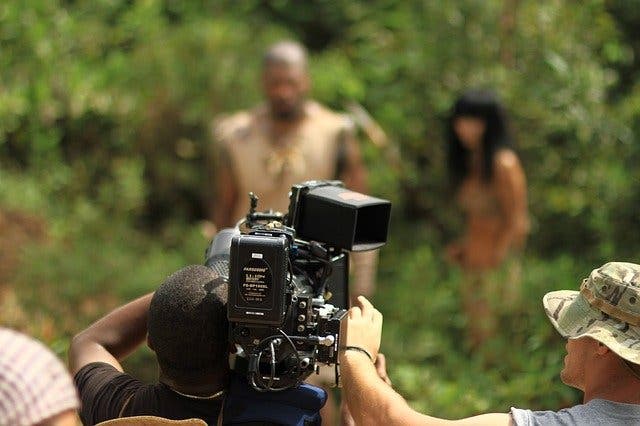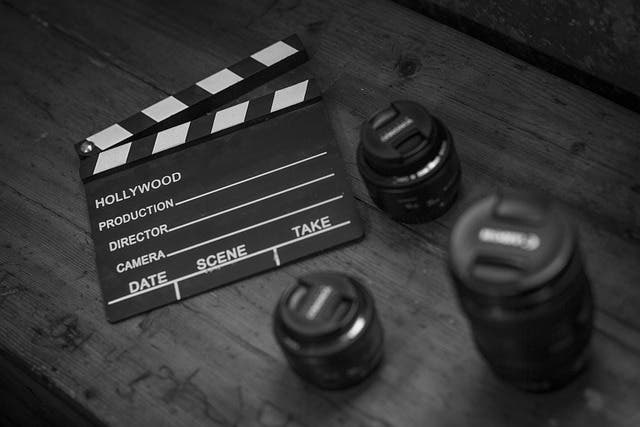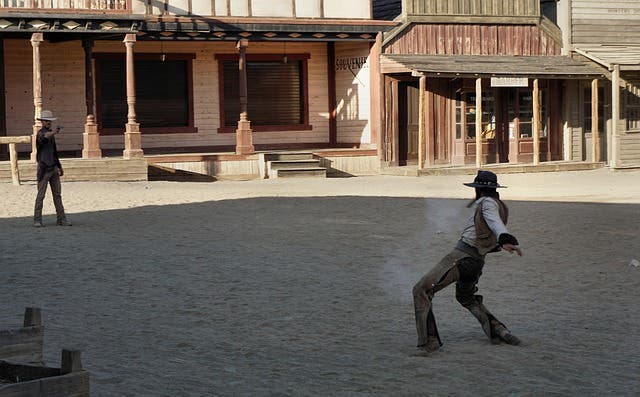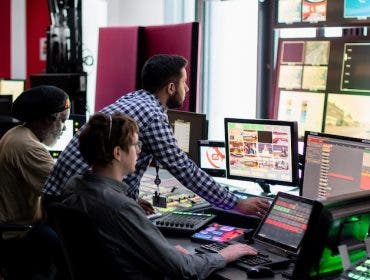When preparing for any film production, there are several key safety tips that you should follow to ensure you have a safe film set that’s free of potential hazards. Film crews regularly deal with plenty of complicated conditions, from high-voltage electricity and complex equipment to unexpected safety issues like unpredictable weather conditions.
Establishing a clear set of safety rules and procedures is the best way to prepare in advance for any safety hazards that may come your way. While this list is far from exhaustive, we’ve assembled an important collection of safety tips for any production company to employ in both pre-production and during filming.
Have a Plan

Plan for the best but prepare for the worst. Preparing for safety hazards can include a variety of practices to avoid production safety issues and deal with accidents if they occur. Here are a few important things to consider as you assemble safety guidelines for your filmmaking process:
- Look for potential safety hazards when scouting locations. If a location seems overloaded with potential hazards, consider shooting elsewhere. If safety concerns seem minimal, make a list at each location so you can come up with key safety information and procedures for your film crew to reference.
- Plot escape routes in case of fire, heavy storms, or other unexpected events. Make sure to include these escape routes in your written safety plan and communicate them at safety meetings.
- Take note of where you’ll power your equipment at each filming location. Is the power source secure? Do you need a generator? What ventilation is available for any generators you may use? These are the kinds of things you should consider.
Carry Out a Risk Assessment

High-budget Hollywood productions will require a risk assessment in the insurance underwriting process, but even small productions should perform risk assessments. What potential hazards can you see pertaining to the locations, the equipment used, the stunts required, or any special effects you’ll use?
Make a list of each potential risk. Brainstorm risks with multiple experienced filmmakers and crew members to ensure you have thought of every potential complication.
Once you establish the potential risks, evaluate how likely they are to occur. If there’s even a slim chance that a risk is real, you’ll need to prepare a plan. What safeguards can you put in place to avoid the hazard from occurring? What procedures will you establish to deal with a situation if it arises?
Manage Obvious and Common Safety Hazards

Some safety precautions seem like common sense but that doesn’t mean you can put them on the back burner. Deal with cables and other tripping hazards right away, before they cause an accident. Secure cables with gaff tape and place brightly colored cones or signs near other tripping hazards. Place fire extinguishers and first aid kits throughout your filming location for easy access.
Follow regular workplace safety guidelines, too. Team-lift heavy gear, and lift with the knees rather than the back. Provide fall-protection gear to film crew members or performers on high platforms or set pieces.
In many cases, you can refer to Union Guidelines for safety information required for union performers or crew members, but it’s a good idea to double and triple check with safety experts as well.
Ensure All Equipment Is Handled Properly and Safely

One of the quickest ways to have a film set accident is mishandling of equipment. A heavy piece of equipment like a crane, a camera, or even a set piece can become a hazard if used incorrectly by the wrong person.
While smaller productions often assign multiple duties to each crew member, no film crew member should handle, set up, or break down equipment that they haven’t been trained and approved to use.
Take steps to protect electrical equipment from the elements and to outfit your crew with the correct attire or personal protective equipment (PPE) as needed.
Hold Regular and Mandatory Safety Meetings

Safety meetings are the most important component in keeping your film crew and performers safe. Your daily meetings should review written safety procedures to prepare for tricky shots and reinforce the importance of handling equipment correctly.
Ensure each member of the crew knows where to find important safety equipment like fire extinguishers and first aid kits. If a crew member makes a mistake or improperly handles equipment, make sure everyone understands what happened so you can correct it and prevent it in the future.
By following these tips and following appropriate safety measures, you can improve the overall safety on set. This will help everyone feel more comfortable from one shooting day to the next.






